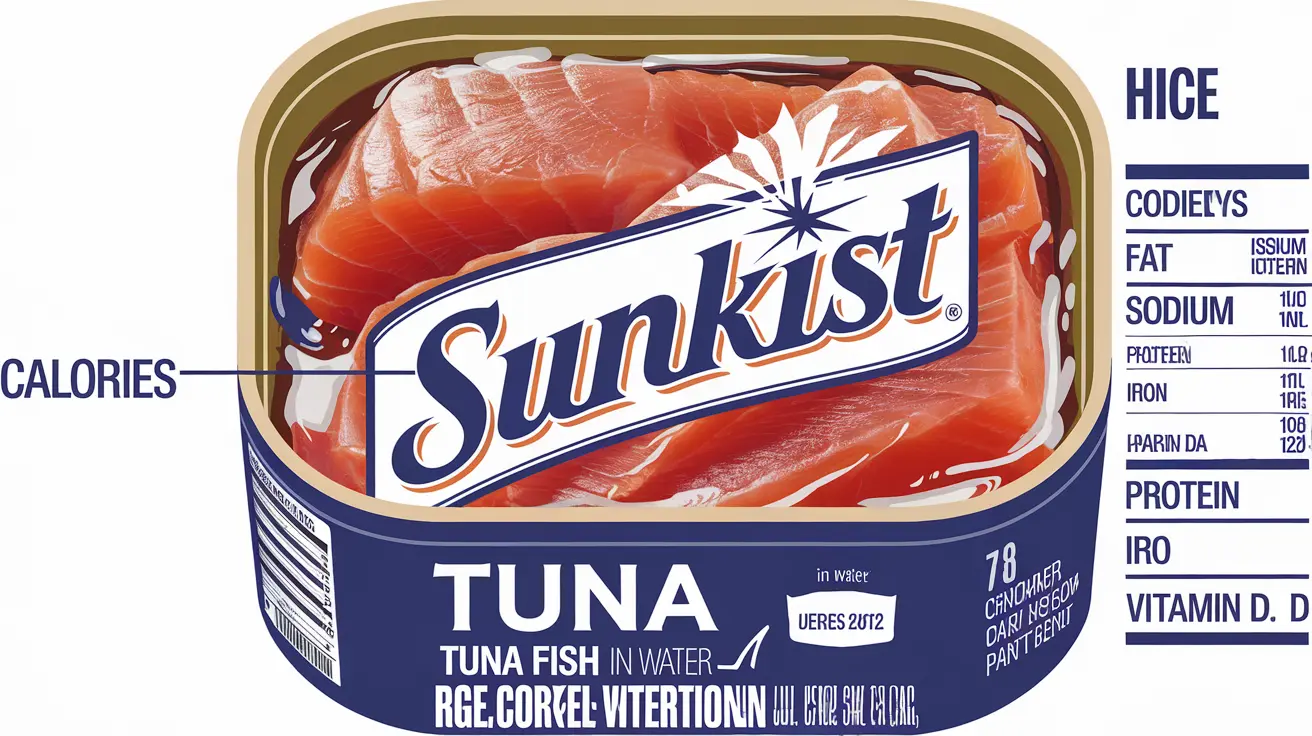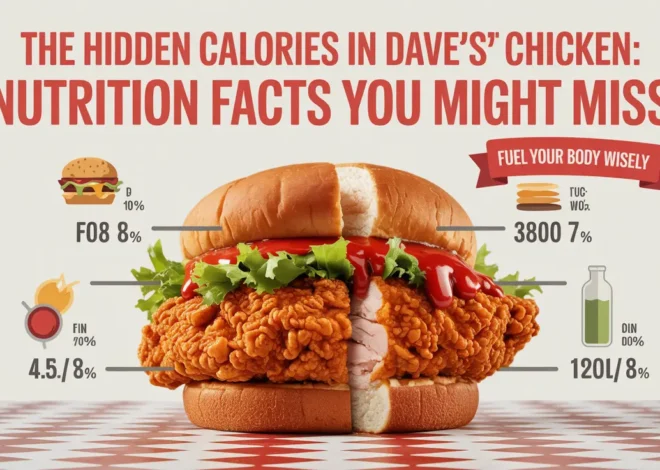
Is Sunkist Tuna Healthy? A Nutritional Breakdown
Sunkist Tuna is a convenient and protein-packed option that fits well into a balanced diet. This pantry staple offers a range of health benefits and is versatile enough to be used in various meals. But what’s inside that can actually support your health? Here’s a breakdown of the nutritional aspects and benefits of Sunkist Tuna to help you decide if it deserves a spot in your diet.
1. High Protein Content for Lean Muscle
Sunkist Tuna is rich in protein, making it an excellent choice for those looking to meet their protein requirements without the extra calories or fat. Protein is essential for muscle repair, immune function, and body maintenance.
- Protein per serving: One serving of Sunkist Tuna contains about 20 grams of protein.
- Benefit: High protein helps you stay fuller longer and aids in muscle growth and maintenance.
For those on a weight loss journey or trying to build muscle, this high-protein food can be a valuable addition to daily meals.
2. Low Caloric Value Supports Weight Management
Sunkist Tuna offers a low-calorie profile, which makes it ideal for anyone looking to manage or lose weight. It delivers significant nutrients without adding unnecessary calories to your diet.
- Calories per serving: A typical serving contains between 70-100 calories, depending on whether it’s packed in water or oil.
- Benefit: Low-calorie foods help you stay in a calorie deficit while still feeling satisfied.
Sunkist Tuna’s low-calorie profile can support weight loss goals when combined with a balanced diet and exercise.
3. Rich in Heart-Healthy Omega-3 Fatty Acids
Omega-3 fatty acids are vital for heart health, and tuna is a natural source of these fats. These healthy fats can reduce inflammation, lower blood pressure, and decrease heart disease risk.
- Omega-3 content: Sunkist Tuna provides a good amount of omega-3s, particularly when compared to other protein sources.
- Benefit: Regular consumption of omega-3s supports cardiovascular health, making tuna a smart choice for heart-conscious individuals.
Omega-3 fatty acids are essential, especially for those who don’t consume other fatty fish regularly. Including Sunkist Tuna in your diet can help you meet your omega-3 needs.
4. Low Saturated Fat Content
Tuna is naturally low in saturated fat, which is beneficial for maintaining healthy cholesterol levels. High saturated fat intake can raise LDL (bad) cholesterol, increasing the risk of heart disease.
- Saturated fat per serving: Sunkist Tuna has less than 1 gram of saturated fat per serving.
- Benefit: A low saturated fat content makes Sunkist Tuna heart-healthy and suitable for people trying to manage their cholesterol.
Since it’s low in saturated fat, tuna can be a valuable alternative to fatty meats for those aiming to keep cholesterol under control.
5. Packed with Essential Vitamins and Minerals
Sunkist Tuna is more than just protein; it’s packed with essential nutrients like B vitamins, vitamin D, selenium, and potassium, all of which are crucial for maintaining good health.
- Vitamin B12: Supports energy production and neurological function.
- Vitamin D: Important for bone health and immune support.
- Selenium: Acts as an antioxidant, protecting cells from damage.
- Potassium: Regulates fluid balance and supports muscle function.
Each serving of Sunkist Tuna offers a rich blend of these vitamins and minerals, making it a nutrient-dense choice.
6. Zero Carbohydrates Make It Keto-Friendly
Sunkist Tuna is naturally carb-free, making it a popular choice for those following low-carb or ketogenic diets.
- Carbohydrate content: Sunkist Tuna has no carbohydrates, making it a great option for those managing blood sugar or following low-carb eating patterns.
- Benefit: Tuna fits well into keto, paleo, and other low-carb diets, allowing you to enjoy a protein source without affecting carb limits.
With zero carbs, Sunkist Tuna can support diet plans that emphasize protein and fat for energy rather than carbs.
7. Lower Mercury Content in Light Tuna
One concern people may have with tuna is mercury content. Light tuna, which is typically used in Sunkist Tuna products, has lower mercury levels than other varieties, like albacore.
- Mercury levels: Light tuna generally contains less mercury, making it safer for regular consumption.
- Guidance: You can safely enjoy light tuna a few times a week, though pregnant women and young children should monitor intake.
Light tuna in particular allows people to enjoy the benefits of tuna while minimizing mercury exposure, making Sunkist Tuna a safe option in moderation.
Comparing Sunkist Tuna Varieties
Sunkist offers a few different varieties, each with its own nutritional profile. Here’s a closer look at what each type offers.
Sunkist Tuna in Water
- Calories: Around 70 per serving
- Protein: 20 grams
- Fat: Less than 1 gram
- Ideal for: Low-calorie and low-fat diets
Sunkist Tuna in Oil
- Calories: Around 100-120 per serving
- Protein: 20 grams
- Fat: 5-7 grams
- Ideal for: Those needing extra calories and healthy fats in their diet
Sunkist Tuna Creations (Flavored)
- Calories: 80-110 per serving, depending on flavor
- Protein: 16-18 grams
- Added ingredients: Some flavors introduce added sugars or sodium
- Ideal for: People seeking a convenient, flavorful option
Health Benefits of Including Sunkist Tuna in Your Diet
1. Weight Management Support
With high protein and low calories, Sunkist Tuna helps you feel full while keeping calorie intake low. It’s ideal for people looking to lose weight or maintain their current weight.
2. Heart Health Benefits
Thanks to its omega-3 fatty acids, tuna supports cardiovascular health. Regular tuna intake may reduce heart-related issues as part of a balanced diet.
3. Bone Health Enhancement
Tuna provides vitamin D and selenium, which are important for bone health. Vitamin D supports calcium absorption, while selenium protects bone cells.
4. Cognitive and Brain Function Support
Vitamin B12 and omega-3s in Sunkist Tuna are known to improve memory, mood, and cognitive function. Regular intake may support long-term brain health.
Sunkist Tuna for Different Diets
For Low-Carb Diets
With no carbs, Sunkist Tuna fits perfectly into a low-carb or keto diet. Pair it with non-starchy vegetables or healthy fats for a balanced meal.
For High-Protein Diets
Sunkist Tuna is ideal for high-protein diets, especially for athletes and fitness enthusiasts. It can help with muscle recovery and growth when consumed regularly.
For Heart-Healthy Diets
Choose Sunkist Tuna in water to get essential omega-3s without the added fats from oil, supporting a heart-healthy diet without excess calories.
Creative Ways to Include Sunkist Tuna in Your Diet
- Salads: Add tuna to leafy greens, tomatoes, and cucumbers for a protein-packed salad.
- Wraps: Use tuna in a whole-grain wrap with avocado and veggies for a balanced meal.
- Snack Packs: Pair with crackers for a convenient snack on the go.
- Tuna Melts: Top tuna with cheese on whole-grain bread for a healthy sandwich.
These meal ideas make it easy to include Sunkist Tuna in your diet without sacrificing flavor.
Frequently Asked Questions (FAQ)
1. Is it safe to eat Sunkist Tuna daily?
While nutritious, it’s best to eat tuna in moderation due to mercury levels. Aim for 2-3 servings a week.
2. Which Sunkist Tuna variety is healthiest?
Tuna in water is generally healthiest, as it is lower in calories and fat. But for those needing extra calories, tuna in oil can be a good choice.
3. How does Sunkist Tuna compare to other proteins?
Tuna is leaner than most meats and comparable to chicken in protein content, with the added benefit of omega-3 fats.
Final Thoughts
Sunkist Tuna offers a range of health benefits, from high protein to essential nutrients like omega-3s. It’s an excellent choice for weight management, heart health, and even brain function. Versatile, convenient, and packed with nutrients, Sunkist Tuna is a worthy addition to your diet.



